
Animals affected by albinism or leucism are genetic marvels, displaying unique colorations that captivate and intrigue. Albinism is a genetic mutation resulting in a lack of melanin, resulting in white or pale skin and eyes with a pinkish hue. Leucism, on the other hand, is a partial pigmentation loss, often leaving the eyes dark. Here’s a look at fifteen rare and stunning animals that stand out in nature.
1. Alligator

In the dark green waters of Southern U.S. swamps, the nearly white skin and pink eyes of an albino alligator are a striking contrast. These reptiles face significant challenges, as their pale color makes them easy targets for predators and vulnerable to sunburn. Claude, one of the most famous albino alligators, lives at the California Academy of Sciences. In the wild, albino alligators rarely survive to adulthood, but those in captivity offer people a rare opportunity to see these unusual animals up close.
2. Zebra
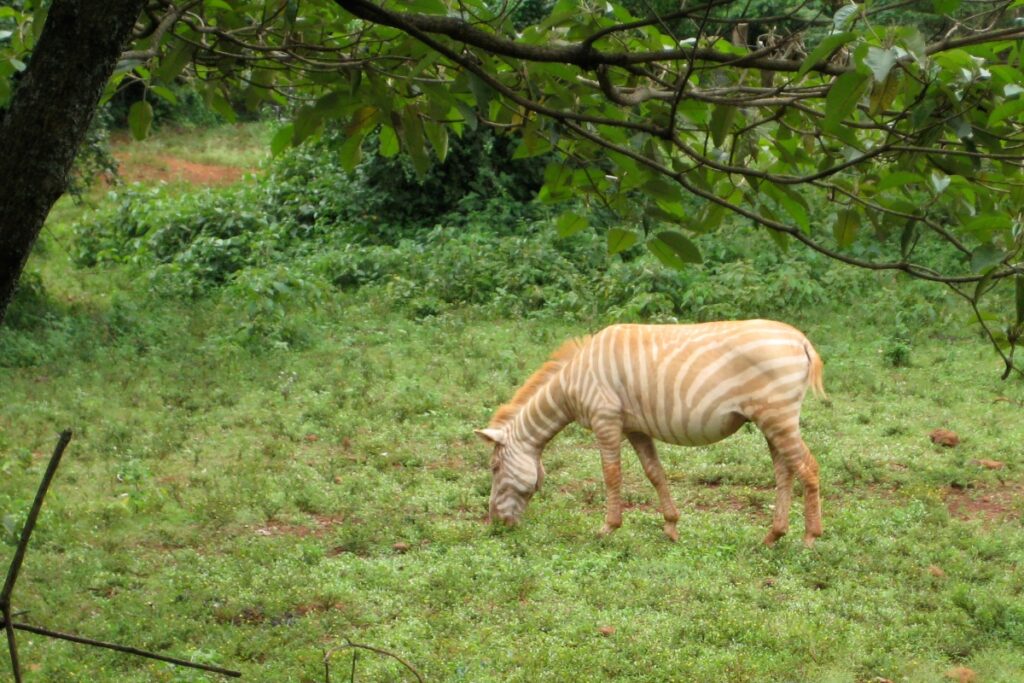
With pale golden stripes in place of the iconic black-and-white pattern, albino zebras, sometimes called “golden zebras,” possess a strikingly singular appearance. This coloration, though rare, may provide some camouflage in dusty, sandy plains where they live. However, it also makes them more vulnerable to sunlight and impairs their night vision. These golden zebras, with their unique camouflage, remind us of the endless variety to be found in nature.
3. Gorilla

One of the most famous albino animals in history, Snowflake the gorilla, lived in Barcelona Zoo until 2003. His white fur and pink made him instantly recognizable, but his albinism also left him vulnerable to skin cancer, which ultimately led to his death. Snowflake’s rarity and gentle personality captivated zoogoers, and his genetic traits made him a valuable subject for research, advancing our understanding of albinism’s effects on primates.
4. Peacock

Not all peacocks are vibrant shades of blue and green. Some, due to leucism, display all-white feathers that form the iconic fan shape but lack any color. These leucistic peacocks, with their dark eyes and ethereal white plumage, look almost angelic as they strut and fan their feathers. Their appearance is a rare spectacle, as they retain the peacock’s signature elegance without the usual splash of color—a unique twist on a familiar beauty.
5. Squirrel

An albino squirrel, with its snow-white fur and bright pink eyes, stands out instantly among the usual shades of gray and black. Unlike leucistic squirrels, which still have dark eyes, albino squirrels lack all pigmentation, which makes them extremely rare and highly visible to predators. Despite these risks, albino squirrels are sometimes spotted in parks and neighborhoods, where their unusual coloring brings a bit of magic to anyone lucky enough to see them.
6. Buffalo
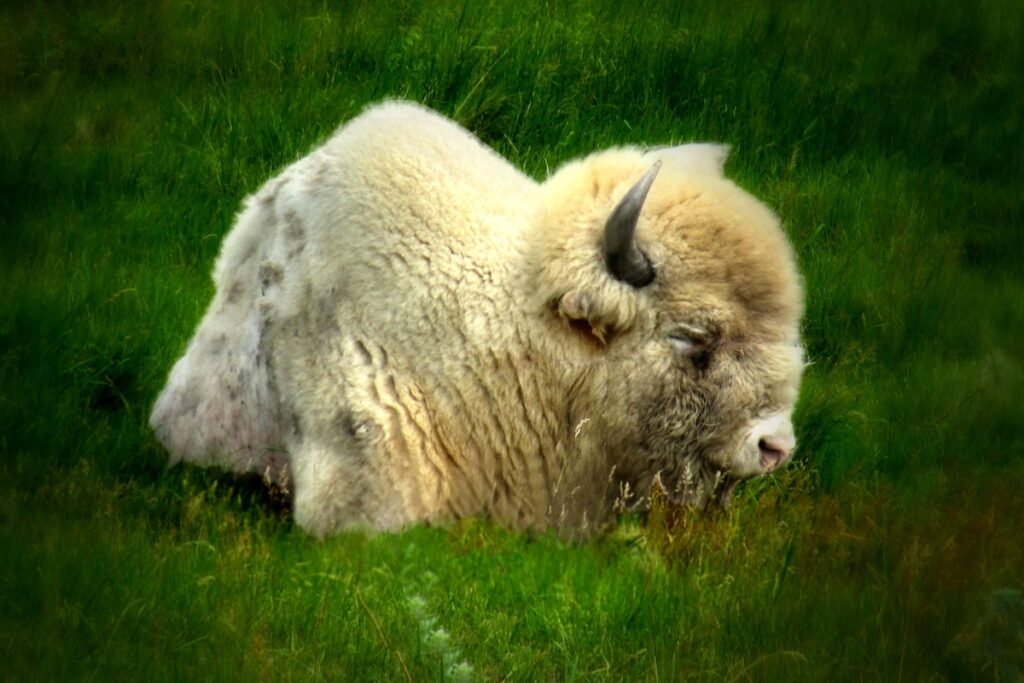
Albino bison, such as White Cloud, are exceedingly rare and hold cultural significance for many Native American tribes. Born in 1996, White Cloud became a revered figure at the National Buffalo Museum in North Dakota—a representation of hope and renewal for Indigenous communities. Her white fur, symbolic of peace and unity, made her a cherished and sacred animal, connecting her rarity with deep cultural reverence and awe.
7. Snail

Delicate and pale, albino snails are a rare sight among their darker-shelled relatives. Often with a pinkish-white shell and a nearly translucent body, these snails stand out as a fragile wonder in nature. In 2011, an albino giant carnivorous snail was discovered in New Zealand, an incredibly rare sighting. Their lack of pigmentation makes them more vulnerable to predators, but they’re occasionally kept as unique pets, adding an element of rarity to mollusk enthusiasts’ collections.
8. Raccoon
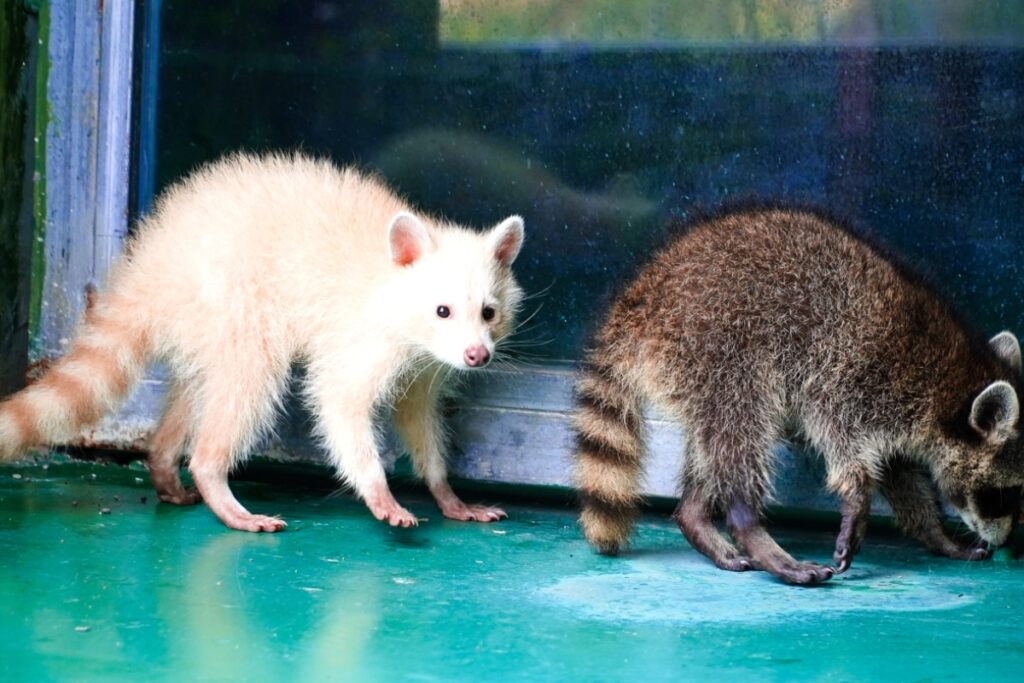
Among raccoons, an albino’s white fur and pink eyes make for a startlingly unique sight, given the usual dark “mask” and ringed tail that define the species. Albino raccoons are incredibly rare and face additional risks in the wild, where their visibility makes them easy targets for predators. In 2015, a rare albino raccoon was rescued in Indiana and taken to a wildlife center, offering experts a chance to observe its adaptation to its unusual coloring and sensitivity.
9. Deer
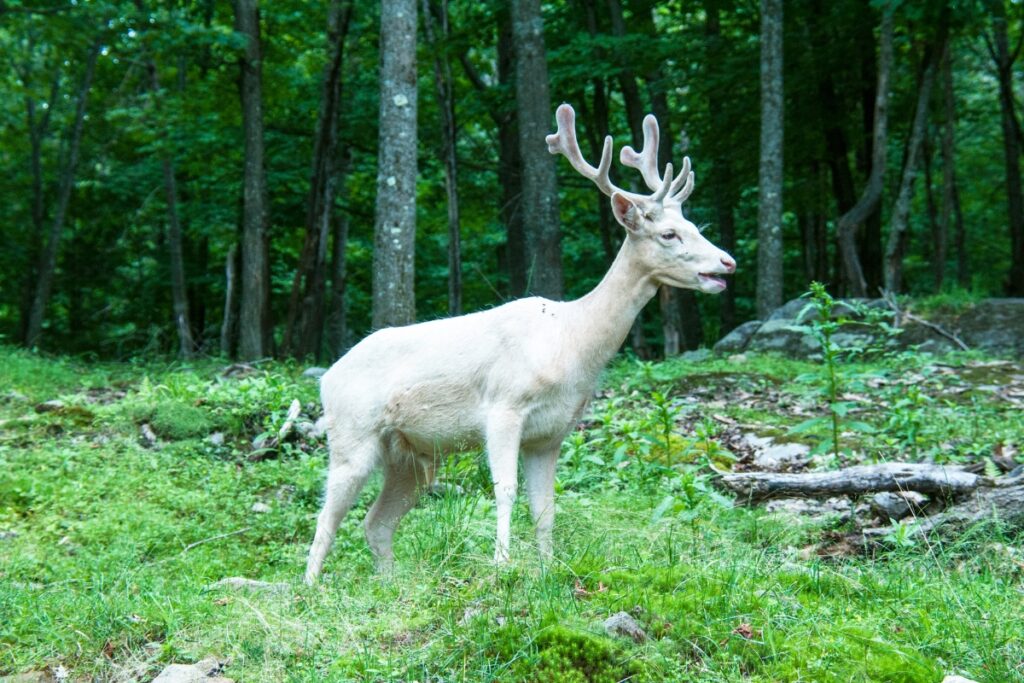
With their pure white coats and soft pink eyes, albino deer appear almost mythical. Unfortunately, their coloration can make them more vulnerable in the wild, too. Their pale fur attracts unwanted attention from predators and can lead to ostracism from their herds. Additionally, albino deer often suffer from poor depth perception, complicating their ability to navigate forests. Spotting an albino deer is a rare event, adding an element of fantasy to the forests they inhabit.
10. Turtle
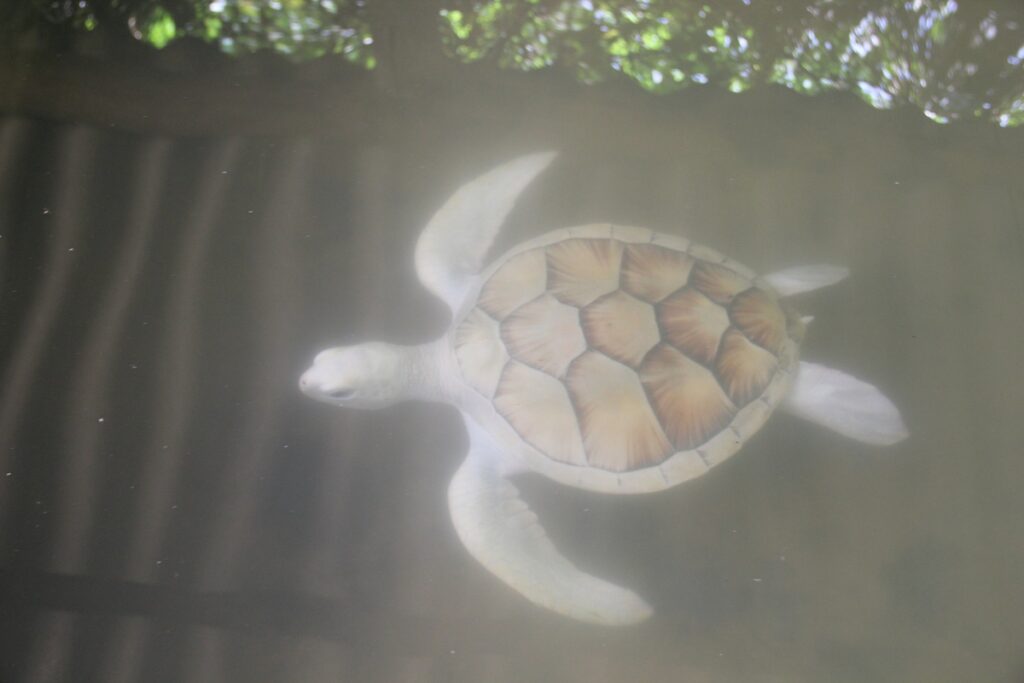
Albino turtles, one of the rarest forms of albinism in reptiles, are breathtaking to witness. In 2016, a pale, pink-eyed hatchling made headlines after hatching on a beach in Queensland, Australia, an extraordinary event for conservationists. Without the usual darker shell to camouflage them, albino turtles also face increased risks from predators and sun exposure. Despite these obstacles, though, albino turtles have a unique resilience, inspiring conservation efforts to protect these remarkable creatures.
11. Kangaroo
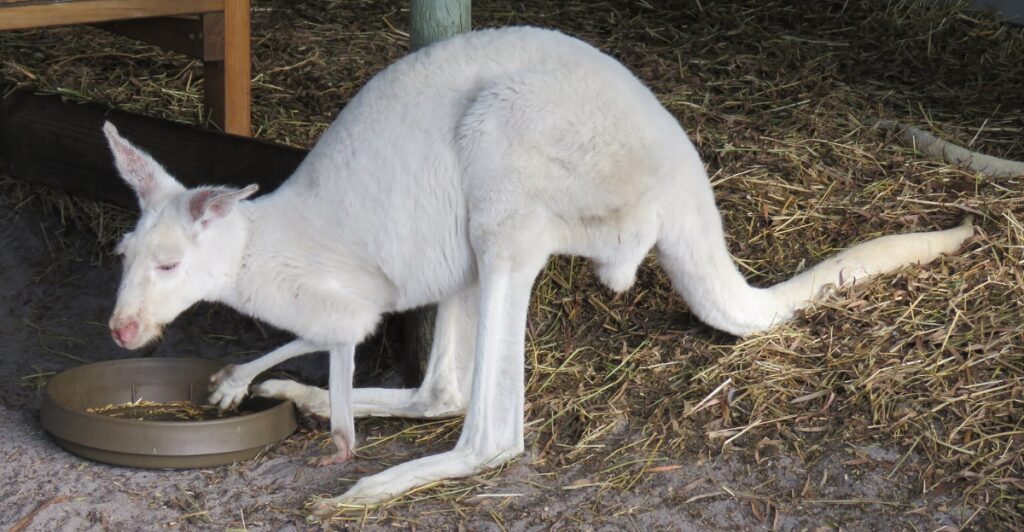
Albino kangaroos, with their pale fur and pink eyes, are not a common sight among Australia’s diverse wildlife. Their lack of pigmentation makes them highly visible in the wild, increasing their risk from predators and the harsh Australian sun. Even in captivity, these marsupials need careful management due to their heightened sensitivity to sunlight. Nevertheless, their distinctive appearance captivates wildlife enthusiasts and offers a rare view of nature’s genetic quirks.
12. Hedgehog
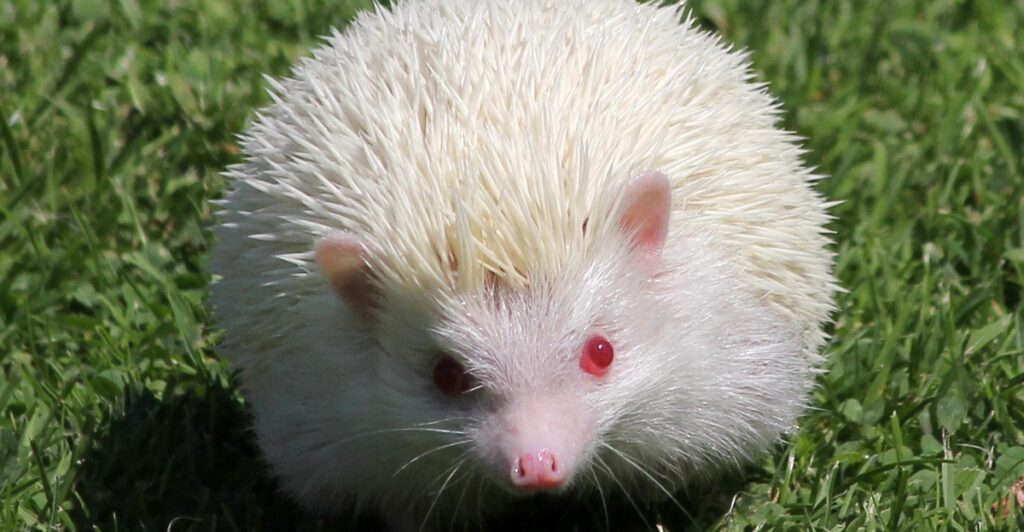
With soft white quills and pale pink eyes, albino hedgehogs stand out dramatically from their darker relatives. Rarely seen in the wild due to their vulnerability, these animals are more commonly found in captivity, where they are cherished by pet owners for their unique looks. Their light-sensitive eyes mean they require an environment with well-controlled lighting, so their quality of life is at its best when they have a human to care for them.
13. Penguin

Albino penguins are extraordinary within their colonies, their creamy-white feathers a striking departure from the species’ classic tuxedoed look. Unfortunately, this unusual coloring can make them targets for predators and even lead to social rejection among their peers. Regardless of these challenges, though, sightings of albino penguins are celebrated as rare phenomena, providing valuable insights into avian albinism and adaptation in polar climates.
14. Hummingbird
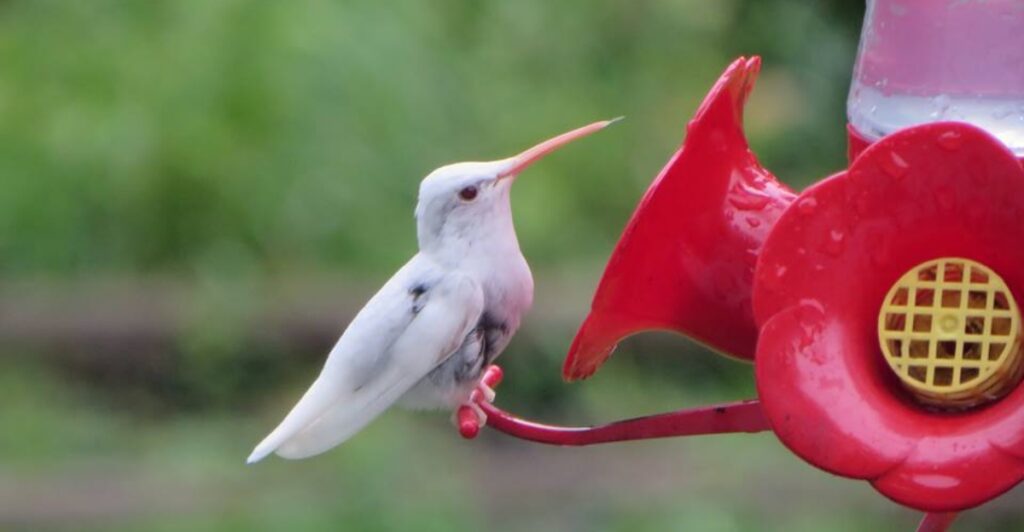
With shimmering white feathers and delicate pink beaks, albino hummingbirds are captivating rarities. Their unusual coloration sets them apart from the vibrant hues of their relatives, unfortunately making them more vulnerable to predators, as their light feathers make them highly visible. However, their incredible speed and agility still allow these small birds to navigate their environment with precision, feeding from flowers and evading threats.
15. Snake
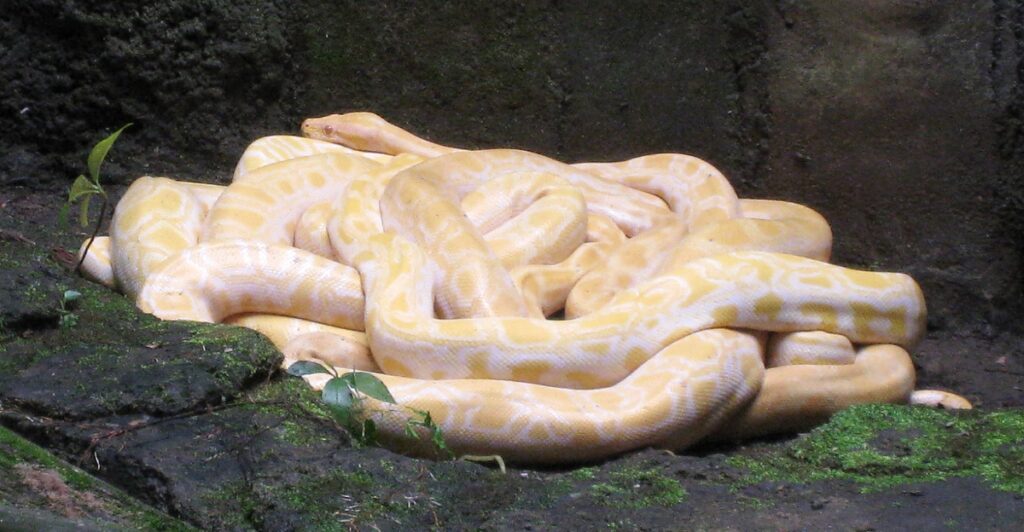
Albino snakes, such as pythons and corn snakes, are known for their striking creamy scales and distinctive pink or red eyes. These reptiles are frequently bred in captivity for their unique appearance, which makes them popular among reptile enthusiasts. In the wild, however, their pale coloration leaves them at a disadvantage, as it reduces their ability to blend into their surroundings and stay out of danger. Their rarity in nature only adds to their allure among collectors and scientists, though.
Stay connected with us for more stories like this! Follow us to get the latest updates or hit the Follow button at the top of this article, and let us know what you think by leaving your feedback below. We’d love to hear from you!







